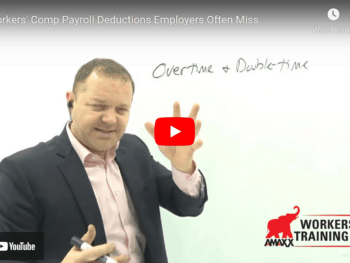Self-insurance programs and high deductible programs are the two most common ways for a company to get almost total control over how their claims are handled.
Formal self-insurance is accomplished without the use of an insurance company. A company must file an application with the state insurance commission to become self-insured. They can either handle their own claims in an arrangement called “self-administration” or have a third-party administrator (TPA) handle their claims. In some cases the TPA can handle the claims in a “dedicated” claims unit which handles only the claims of that particular company. The term “self-insured/self-administered” is used when a self-insured company handles its own claims in-house, i.e. they hire their own adjusters to handle their claims. Many companies that are self-insured participate in industry or state organizations made up of other self-insured companies.
Click Link to Access Free PDF Download
“Workers’ Comp Claims Review Checklist: 9 Must-Have, Serious-Impact Elements”
The Benefits to Self-Insuring
- Maintains use of their cashuntil a loss is paid. However, when the loss is paid, if it’s a large claim they often “feel the pain” because none of the risk is transferred so they must pay the entire amount. If the division incurring the loss is a smaller division of a large company the cost can equal the amount of a significant percentage of their sales.
- Flexibility and control because the company selects counsel (and pays for it), settles all claims and makes all other decisions associated with the claim. The adjusters can be part of the workers’ compensation cost control teams that make phone calls to employees reminding them about medical appointments, etc. Conversely, if the company does not have a return-to-work program, they pay for all lost days out of pocket. They CAN however, place more emphasis on medical control by retaining a medical director either full-time or part-time to make sure independent medical examination cover letters are well-written and perhaps even contact the injured employee and their medical provider (where allowed by state laws). Thus, the emphasis can be place on improved medical care.
- Reduced cost of overheadwith the insurance function taken in-house. However, self-administering is not cheap, and a careful analysis should be made before making the decision to self-insure.
While there are benefits, there are also drawbacks. Carefully consider the decision to take the risk on without the use of an insurance vehicle. For more information about what you can do to reduce your losses, go to www.ReduceYourWorkersComp.com
High Deductible Program
Another approach for a self-insured employer unable to set aside the necessary reserves for catastrophic claims is a large deductible program. In a large deductible program the employer purchases a policy of insurance from an insurance company. The employer is responsible for reimbursing the insurance company for each claim in the policy period up to a dollar limit. The employer will also have a maximum amount of exposure for all claims combined.
Author Rebecca Shafer, JD, President of Amaxx Risk Solutions, Inc. is a national expert in the field of workers compensation. She is a writer, speaker, and publisher. Her expertise is working with employers to reduce workers compensation costs, and her clients include airlines, healthcare, printing/publishing, pharmaceuticals, retail, hospitality, and manufacturing. She is the author of the #1 selling book on cost containment, Workers Compensation Management Program: Reduce Costs 20% to 50%. Contact:RShafer@ReduceYourWorkersComp.com.
Editor Michael B. Stack, CPA, Director of Operations, Amaxx Risk Solutions, Inc. is an expert in employer communication systems and part of the Amaxx team helping companies reduce their workers compensation costs by 20% to 50%. He is a writer, speaker, and website publisher. www.reduceyourworkerscomp.com. Contact: mstack@reduceyourworkerscomp.com.
©2012 Amaxx Risk Solutions, Inc. All rights reserved under International Copyright Law.













